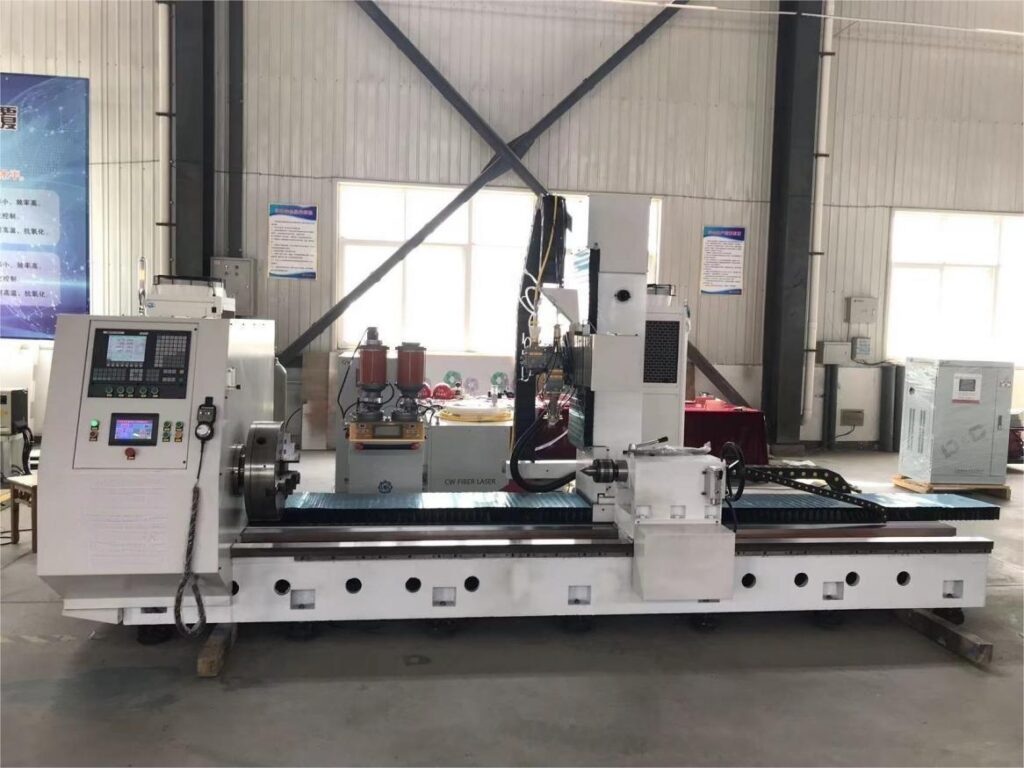The drawbacks of regular laser cladding, such as low processing efficiency and high processing cost, have been considerably overcome by high-speed laser cladding technology. However, people’s desire to improve processing efficiency and lower processing costs is limitless. The question of how to continue to minimize processing costs is a key aspect of high-speed laser cladding development.


Because powder costs 80%-90% of the entire cost of laser cladding processing, optimizing powder utilization is a critical technological challenge in high-speed laser cladding. To that purpose, we must determine which parameters influence the powder consumption rate of high-speed laser cladding.
Let’s go over each of these elements individually and see how we may enhance the powder usage rate of high-speed laser cladding.
Melt pool spot size
The key factor influencing the usage rate of high-speed laser cladding powder is the molten pool spot size, or the spot size of the laser dropping on the substrate’s surface. The molten pool spot of high-speed laser cladding may be set between 1 mm and 5 mm depending on the laser power. In practice, the proper size of molten pool location must be chosen based on the laser power of the equipment.
The powder usage rate is poor if the molten pool spot is too tiny; if the molten pool spot is too large, the coating surface flatness is lowered. Increasing the molten pool spot can enhance powder usage, but if it is too large, the coating flatness will be compromised, resulting in powder waste in the subsequent grinding and polishing procedures. Even for high-speed laser cladding, the powder utilization rate must take into account not only the powder utilization rate of the cladding process, but also the overall powder usage rate of the cladding process after grinding and polishing.
The cladding head’s powder output diameter
The thickness of the powder stream is determined by the diameter of the cladding head’s powder outflow hole. The finer the powder stream, the narrower the aperture; nevertheless, the finer the powder stream, the faster it diverges. In practice, the appropriate size of the powder outlet hole must be chosen based on the cladding height and the molten pool spot size to ensure that the powder spot diameter on the substrate surface is smaller than the molten pool spot diameter; otherwise, any powder that exceeds the molten pool spot will be lost and wasted.
Laser power size
The laser power must be sufficient to melt the powder that falls into the molten pool spot completely. When all other factors remain constant, the higher the laser power, the higher the powder usage rate.
Powder feeding amount
When the laser power of the equipment is decided, the lower the powder feeding amount, the higher the powder utilization rate; however, lowering the powder feeding amount will impact the cladding efficiency. Controlling the powder feeding quantity can increase the powder utilization rate to 100% if the cladding efficiency is not taken into account, however this strategy is pointless.
Cladding line speed
High-speed laser cladding has a linear speed that is many times, if not hundreds, faster than standard laser cladding. When the relative movement speed between the substrate and the cladding head is high, the kinetic energy of the powder particles on the surface of the substrate is high, resulting in high powder ejection and low powder utilization rate. Furthermore, when the laser power is selected, the higher the relative movement speed between the cladding head and the substrate, the lower the temperature of the molten pool, and thus the powder utilization rate.
Workpiece volume size
The wider the diameter (volume) of the workpiece for the same cladding settings, the lower the powder consumption rate. Because the laser energy is absorbed more by the matrix when the volume is bigger, the melt pool temperature is insufficient. As a result, more powerful cladding equipment must be employed for large-volume workpieces to optimize powder use.
Powder particle size
Because the contact period between high-speed laser cladding powder and light is brief, powder with the suitable particle size should be chosen based on the laser power. Larger powder particles will cause the powder to fail to melt in a short period of time, resulting in ejection and splash loss.
Summary
The seven major elements influencing the usage rate of high-speed laser cladding powder are listed above. To enhance the powder utilization rate and lower the processing cost of cladding processing, appropriate hardware technical parameters and cladding processing process parameters must be selected based on the individual characteristics of the equipment and cladding workpiece.
